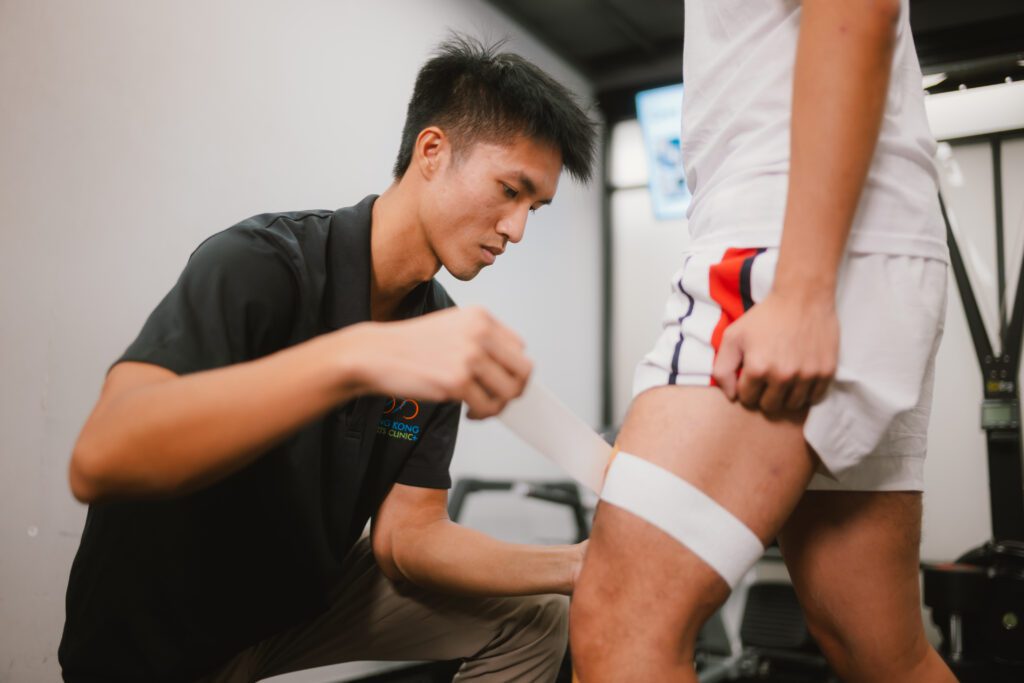contact us
What to Expect from Your ACL Rehab Sessions?
- Comprehensive Initial Assessment
- World class ACL specialists
- Personalised End-to-end Care Plan
- Most efficient and sustainable recovery based on your specific needs
- Prehabilitation before Surgery & Post-surgical Management
- Range of Motion & Strengthening Programs
- Proprioception and Balance Training
- Functional Training
- Education and Guidance

We deliver not just a speedy recovery, but lasting results
- Personalised care: Our team is dedicated to creating a recovery plan that’s as individual as you are;
- End-to-end support: From the moment of injury to your return to action, we are with you every step of the way with a comprehensive care plan
- Long term mindset: We go above and beyond to ensure you are not just getting an ACL treatment, but also a partner committed to a lifetime of activity and well-being
- Latest scientific knowledge: We are trained by the world leaders in ACL rehab

Stories of Healing & Recovery from ACL Injuries- Testimonials
Our diverse customers are passionate advocates for our excellent services.
EXCELLENTTrustindex verifies that the original source of the review is Google. I wanted to share my experience at HK Sports Clinic with anyone reading and wondering if this is the sort of practice that suits their needs. I came into the clinic with a bad muscle sprain in my mid to upper back, with no clarity on the situation. I was then introduced to the physio Mete, who is well-versed in a variety of services, as I've seen on the website; with that, I was sure he would be able to help me. His ability to distinguish where the pain was originating and how to properly treat it was superb. The process went smoothly, with him discussing each stage of the muscle tightness treatment and how I could properly avoid it with exercises that he specifically catered to me. His professionalism and service were outstanding, and I'd highly recommend anyone who is looking for highly skilled and knowledgeable physios to visit HK Sports Clinic and, if possible, see Mete.Trustindex verifies that the original source of the review is Google. The team at HKSC is honestly the best - I came in having struggled with chronic back pain for years and Icy/Seva helped me fix my issues. They are truly caring about the clients with utmost accountability. Highly recommend!!Trustindex verifies that the original source of the review is Google. Moriah treated my back injury when I was at my lowest— in tears and desperate to return to my favourite sport. Her calm, professional approach immediately put me at ease. She listened carefully, tailored my rehab to my abilities, and always focused on helping me get back to what I love, stronger and safer than before. Her expertise and attention to detail were outstanding. Thanks to her, I made a full recovery and learned how to prevent future injuries. I highly recommend Moriah to anyone needing a skilled, compassionate physiotherapist who truly cares about her patients' recovery and wellbeing.Trustindex verifies that the original source of the review is Google. All staff I met are professional, attentive, and focused on providing personalized treatments that really make a difference. I’ve been a regular client for over 6 months and have seen major physical improvements in my body. I particularly recommend Icy, the trainer I work with - she is knowledgeable, supportive, and always dedicated to helping me achieve my goals.Trustindex verifies that the original source of the review is Google. I was so surprised as my friend had told me about this free physiotherapy service for domestic helper. It is a big help someone like me who is suffering fr. plantar fasciitis. My first experience was so good. I amazed w/ the beautiful facilities and amazing people w/ kind hearts and an excellent service provided by my physiotherapy "Theresa." I was well taken care of and a nice experienced w/ her. Looking forward for my next therapy session. Thank you so much!Trustindex verifies that the original source of the review is Google. It has been an amazing time to be aware of whats happening to your body so I can do things the will help me utilize my body in a positive way other than abuse it . I am glad that i had the chance to know this clinic ,Vanessa especially is nice enough to help me feel better.Trustindex verifies that the original source of the review is Google. Moriah was really helpful and nice!! had a nice time and also recovered quickly once the reason of pain was found👍🏽👍🏽👍🏽
Talk to Our Expert Team
Your Guide to Better Health

Understanding ACL Injuries in Women: A Comprehensive Physiotherapist’s Perspective By Jenghis Lui (RPT HK).
The ACL is a major ligament
April 24, 2024

Recovering Strong: Your Comprehensive Guide to ACL Tear Rehabilitation
By Kayden Wu (M. physio) Introduction:
August 9, 2023
Be Inspired
Be Informed
Reach Your Goals


